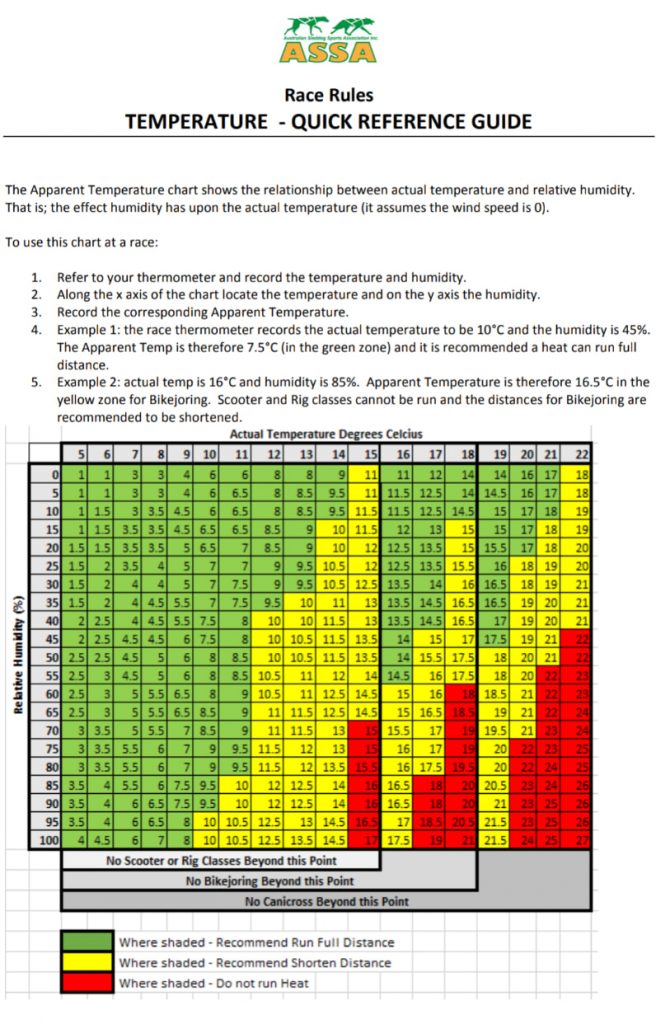Temperature is warming up, or it isn’t quite fall yet; the questions keeps coming up: is it too warm to run my dog?
Our Australian friends are used to this question as there “cold” season isn’t that cold.
The Australian Sleddog Sport Association uses a chart to frame its dryland racing temperature rules. This would be the most comprehensive chart I have come across as both temperature and humidity are taken into consideration.
Points to take into consideration when referring to this chart:
- Take good note that the temperature given are in FULL SHADE.
- The chart is set as a general base line. Each specific dog has its specific sensitivity to heat, we each are responsible to decide on our dogs own limitations and set more conservative cut off temperature as needed. This guide is far from conservative (it is meant to allow as much as possible events to go ahead); northern breeds and bigger dogs should be more conservative when judging temperature conditions.
- This chart is designed to provide guidance in regard to safe running temperature. The higher safe temperatures are not equal to most comfortable conditions. For younger dogs or dogs building up there running drive, you will want to consider sticking to the most ideal temperature conditions in favor of most motivating conditions. You want your dog to associate harness work with feeling awesome.
- Keep in mind that most driven dogs will not self preserve and will run themselves into heat stroke. The harder a dog works, the most wary and careful you need to be. I have personally attended to a dog that had overheated (all the way to having seizures) in temperature below freezing. Dogs can give a lot of heart when running. Part of driving dogs is keeping them safe and happy.
*There is mention of full and reduced race distance. The Australian race distances for canicross, scooter, bikejoring range between 2km and 8km.

Elements other then temperature to take in consideration
- Humidity – Dogs do not cool down effectively when it is humid
- Are you running in the shade or sun? Other then ambient temperature, the radiating heat of direct sun exposure will affect your dog. Also, in the direct sun, a black dog will be more affected then a white dog.
- Are there streams, rivers, lakes along your course for your dog to take cool down breaks?
- Has your dog acclimatized. The same dog may struggle more with 10C in April but be fine with the same level of effort with 10C in August
- A dog that has previously suffered of heat stroke will be more vulnerable to heat stroke
A little trick
When I am a little unsure about the temperature, whether its ok or not for my dog, or worried it may go up, I over dress slightly. I make sure that at my effort level, I will feel uncomfortable as soon as it warms up or that over the outing, I will also feel the heat exertion. Some times it can help to set ourselves to the same level of discomfort as our dogs.



